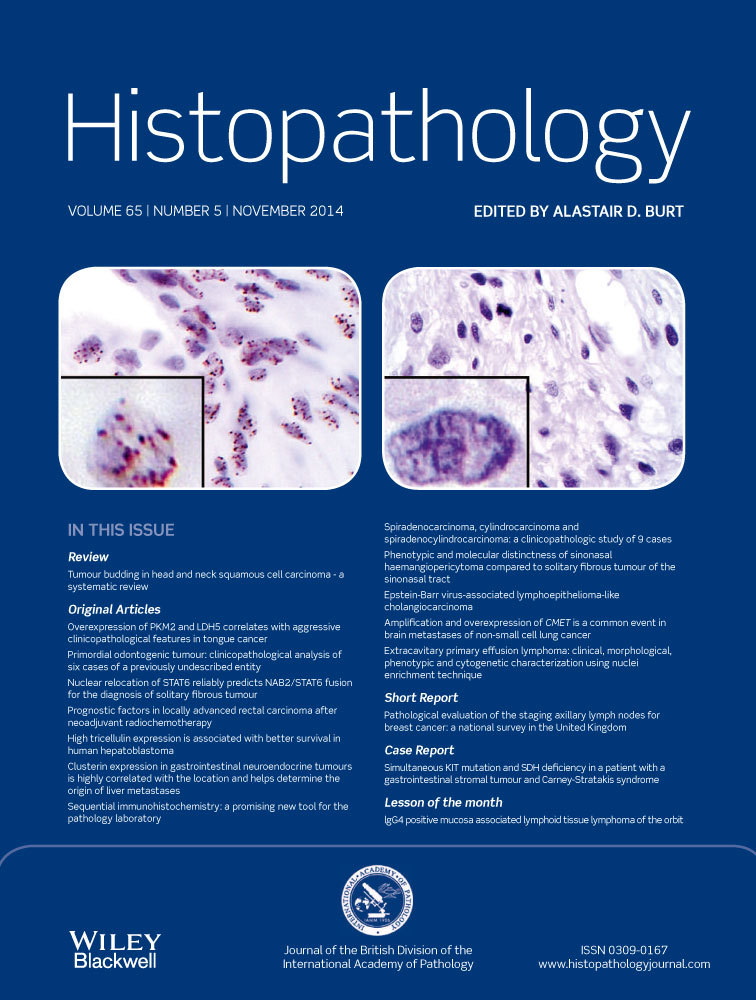Pathological prognostic factors in locally advanced rectal carcinoma after neoadjuvant radiochemotherapy: analysis of 113 cases
Abstract
Aims
Neoadjuvant radiochemotherapy (RCT) followed by surgical resection is the treatment for locally advanced mid-rectal or low rectal cancer. The aim of this study was to evaluate postoperative histological prognostic factors in a series of surgical specimens after neoadjuvant RCT.
Methods and results
One hundred and thirteen patients were included. Macroscopic and microscopic examinations were performed according to CAP recommendations, with additional criteria such as tumour budding, the presence of calcifications, and response to neoadjuvant therapy assessed according to Modified Rectal Cancer Regression Grade (m-RCRG). The 3-year disease-free survival (DFS) was 67.6%. In univariate analysis, ypTN stage, tumour budding, circumferential margin, invaded margin and vascular and perineural invasion were prognostic factors. In multivariate analysis, the presence of calcifications (P = 0.04) and an involved circumferential margin (P = 0.03) were the only independent factors for worse DFS. mRCRG was not correlated with DFS. Among the 50 m-RCRG1 tumours, DFS was better in ypT0 patients than in other ypT stages (P = 0.003).
Conclusions
The presence of calcifications in the tumour bed is described for the first time as a prognostic factor in rectal cancer. The prognostic value of budding was demonstrated in this study after neoadjuvant RCT. ypT stage appears to be a more reliable predictor of oncological outcome than histological tumour regression grade, which needs to be standardized for better reproducibility.




